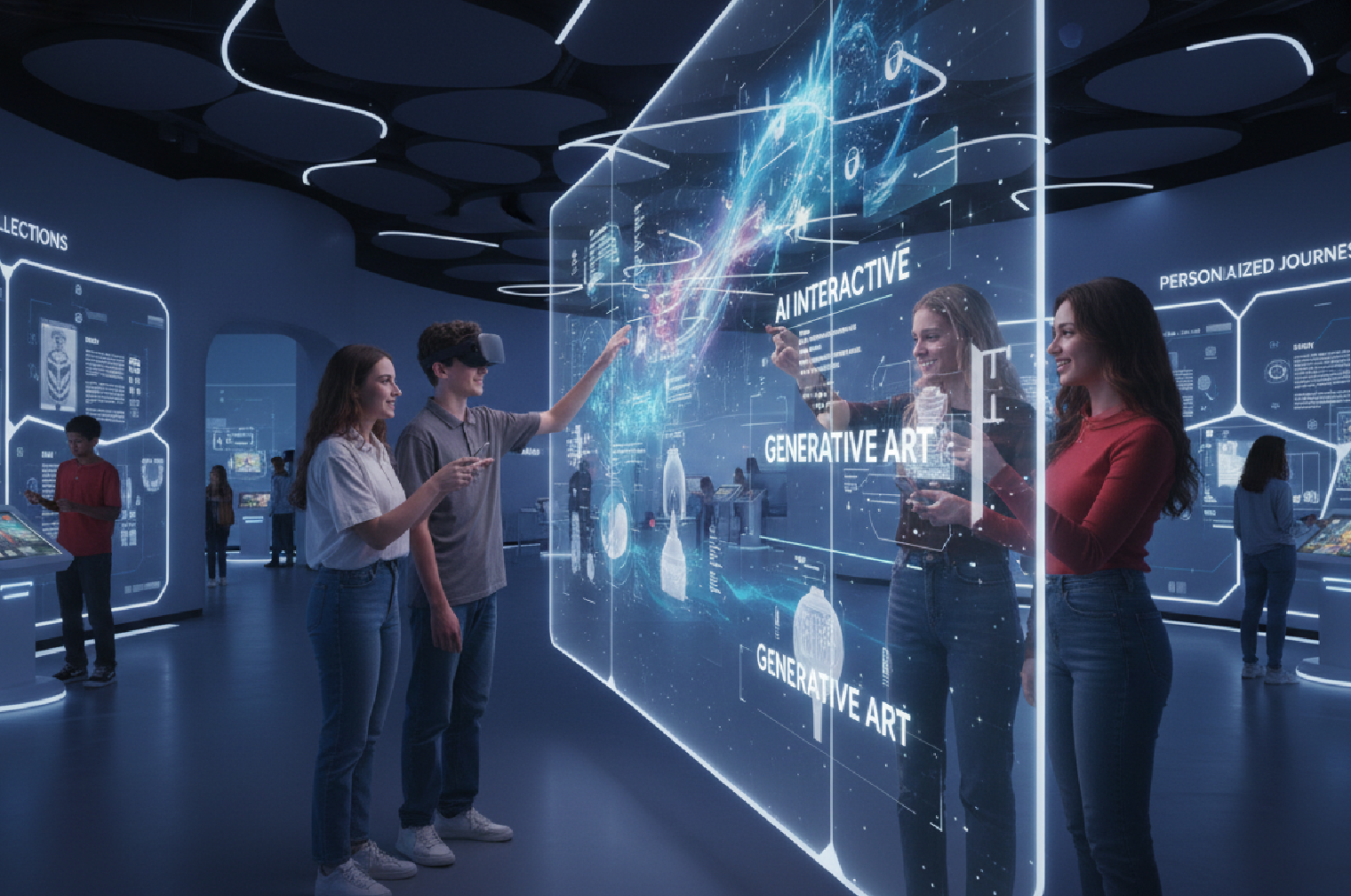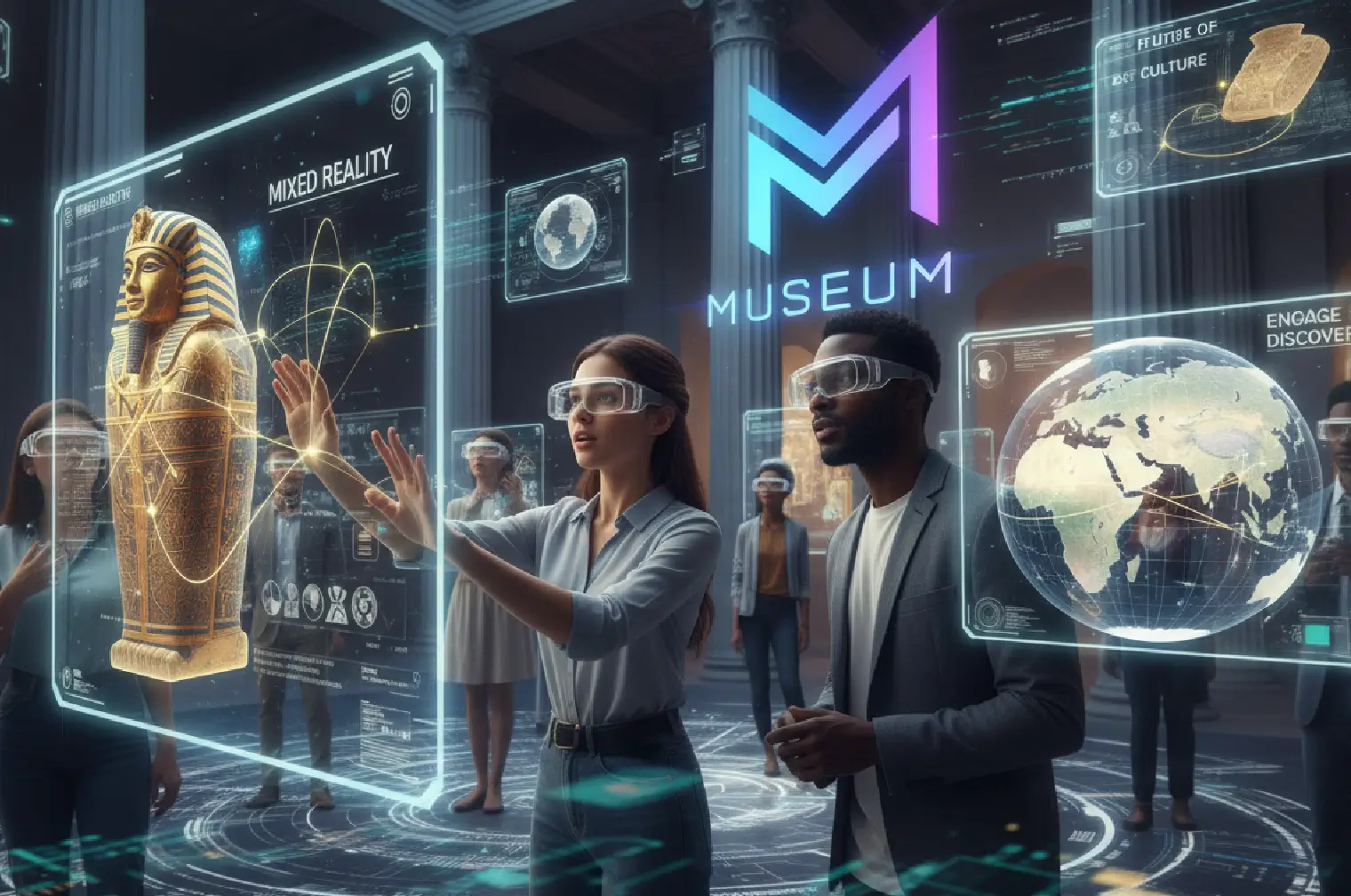Machine Learning and AI for revolution of Tech Companies are changing and streamlining businesses.
Gen Z discovers culture through short-form, mobile-first channels, which means museums must meet them with responsive, personalized storytelling powered by data and design, not static labels and linear tours.
ViitorCloud brings digital experience solutions and AI integration expertise to help institutions deploy AI-powered digital experience platforms for museums, modernizing engagement, attracting Gen Z, and crafting immersive visitor journeys from start to finish.
In practical terms, digital experience solutions for museums unify content, context, and channels so cultural narratives adapt in real time to intent, pace, and preference, creating reasons to visit, stay, and return.
Gen Z’s expectations are set by platforms that feel predictive, social, and visually rich, so adopting AI-powered museum platforms is less a trend and more a baseline for relevance.
Institutions that activate AI integration in museums gain a flywheel of insights—each interaction informs the next recommendation—turning one-time visits into ongoing relationships across web, app, and gallery touchpoints.
What do Gen Z visitors expect?
AAM’s recent framing of Gen Z engagement highlights operational behaviors—responsiveness, inclusion, co-creation—that correlate with youth relevance, reinforcing a shift from transmission to participation.
Academic analyses likewise find Gen Z favors interactive and technologically enhanced exhibits, with AR/VR and personalized content meaningfully increasing attraction and dwell time compared to static galleries.
Over 60% of Gen Z users use TikTok as a search engine, changing how audiences find exhibitions and decide what’s worth a visit. Aligning editorial calendars, formats, and in-gallery experiences with this reality means designing for shareability and continuity, not one-off campaigns, amplifying museum omnichannel engagement.
Reimagine Museum Engagement with AI-Powered Digital Experience Platforms
Bring exhibits to life and engage visitors like never before with ViitorCloud’s smart, immersive museum solutions.
How do AI platforms personalize journeys?
AI-powered digital experience platforms for museums ingest behavior signals—interests, pace, accessibility needs—to recommend exhibitions, objects, and routes, enabling museum visitor personalization that feels like a knowledgeable companion, not a script.
Conversational guides and adaptive labels translate curatorial depth to each visitor’s context, while behind the scenes, models cluster affinities to refine content sequencing and narrative arcs over time.
Personalization is delightful as well as measurable performance lift, with McKinsey research linking tailored experiences to higher satisfaction, loyalty, and revenue outcomes that cultural organizations can translate into visitation and membership growth.
Designing digital experience solutions for museums around this evidence builds trust with boards and funders by connecting AI solutions for museum outcomes to clear engagement and sustainability goals.
Where does immersion make a difference?
Immersive technology for museums—anchored in AR and VR—moves beyond spectacle when it integrates with learning objectives and collection metadata to deepen understanding and memory retention.
Emerging work in AI for immersion shows how multimodal systems tailor fidelity, pace, and narrative branches in real time, keeping attention high without overwhelming visitors.
Interactive virtual museum tours are evolving too, with AI-driven personalization adjusting paths to interests and learning styles, sustaining global reach while driving on-site intent through teasers, wishlists, and timed content unlocks.
When these channels unify with on-premise experiences, a smart museum treats remote and in-person touchpoints as one journey with a shared profile, not separate programs.
Traditional vs AI-powered museum experiences
| Aspect | Traditional experience | AI-powered experience |
| Discovery | Search relies on static websites and press; social impact is incidental, not designed | Discovery optimized for short video, micro-stories, and creator collabs that flow into personalized on-site paths |
| Wayfinding | Fixed maps and wall text with limited context-awareness | Context-aware routing with adaptive pacing, accessibility options, and relevance scoring across galleries |
| Content depth | One-size-fits-all label copy and audio stops | Layered narratives with AI-driven summaries, deeper dives, and multi-voice perspectives per visitor |
| Accessibility | Good intentions, limited real-time adaptation | Live captioning, descriptive audio, and assistive chat that respond in the moment |
| Engagement loop | Visit is a one-off, little post-visit continuity | Persistent profiles power follow-ups, recommendations, membership nudges, and social sharing |
| Operations | Manual forecasting and reactive maintenance | Predictive demand, flow optimization, and proactive maintenance using AI and IoT |
How does omnichannel engagement work?
Museum omnichannel engagement connects web, app, social, email, kiosks, and galleries through a shared content and identity backbone so journeys feel continuous.
The intent is to meet visitors where discovery starts—often social video—and help them glide into saved objects, time-based planning, and in-gallery guidance without friction, driven by digital experience solutions for museums.
Omnichannel strategies are correlated with stronger retention and higher conversion in broader CX research, and museums can adapt these principles to deepen loyalty and repeat visits with ethical data practices and transparent value exchange.
AI-powered museum platforms then operationalize this loop by learning from every click, view, and dwell to refine programming and outreach.
Check: How Custom AI Solutions Transform Digital Experiences
Transform Visitor Journeys with AI-Powered Digital Experience Platforms
Enhance storytelling and create data-driven experiences that connect visitors to culture and history seamlessly.
What about smart museum operations?
A smart museum leverages AI and IoT across prediction, identification, and optimization—forecasting demand, recognizing objects for context delivery, and tuning environmental conditions for conservation and comfort.
This backbone turns galleries into responsive spaces where content, lighting, and wayfinding adapt to visitor flow and accessibility needs without compromising curatorial integrity.
Institutions are also applying AI to maintenance, staffing, and sentiment analysis, translating real-time signals into smoother operations and higher visitor satisfaction. The compound effect is a museum that is safer, more efficient, and more resilient, funding mission priorities through better resource allocation and experience-led growth.
Visitor engagement tools to prioritize
- Adaptive tour planners that personalize routes by interests, time, and access needs
- Conversational guides that answer questions, summarize context, and translate in real time
- Social-ready micro-stories and creator-aligned formats to fuel discovery loops
- Profile-linked wishlists and reminders that connect virtual previews to on-site visits
- Consent-forward analytics that measure impact while honoring privacy and trust
How can museums transform smoothly?
Start with a two-speed roadmap: quick wins that validate AI integration in museums—like pilot personalization on a high-traffic gallery—and a platform plan that scales content, data, and governance across the institution.
Define success metrics that matter—dwell time, satisfaction, accessibility usage, revisit rates—and connect them to funding narratives and board reporting grounded in digital experience solutions for museums.
Invest in content operations early—taxonomy, rights, accessibility overlays—so AI can reason over consistent, inclusive metadata, and establish guardrails for authenticity to protect cultural voice.
With the right integration partner, orchestration spans web, app, in-gallery systems, and data pipelines without locking into brittle stacks, enabling AI solutions for museum programs that evolve with strategy.
Elevate Museum Experiences with AI-Powered Digital Experience Platforms
Unlock personalized, interactive, and scalable digital experiences tailored for modern museums with ViitorCloud.
Choose ViitorCloud to build an AI-powered cultural destination
ViitorCloud unifies strategy, content, and engineering to deliver AI-powered digital experience platforms for museums that attract Gen Z, scale curation, and elevate accessibility—end to end from pilot to platform.
With specialized AI Integration capabilities, the team helps institutions connect immersive storytelling with measurable outcomes across discovery, visitation, and loyalty.
For directors and cultural partners, this is a pragmatic path: align mission and metrics, prototype quickly, prove value, and scale responsibly with a platform designed for omnichannel engagement and continuous learning.
Explore ViitorCloud’s digital experience services to architect a resilient, smart museum that thrives on curiosity, community, and repeat visits.
Contact us at [email protected] and book your complimentary consultation call with our experts.
Frequently Asked Questions
Use explicit consent, clear controls, and minimal data for maximum value, with visitor access to preferences and history at any time.
No, it scales curatorial guidance by adapting depth and sequence while preserving attributions, provenance, and editorial guardrails.
Launch a small pilot—such as adaptive tours in one gallery—paired with success metrics and a plan to scale content ops and governance.
Yes, real-time captioning, descriptive audio, and adaptive interfaces expand inclusion without sacrificing narrative richness.
Interactive virtual museum tours seed intent with personalized previews, wishlists, and time-based recommendations tied to on-site experiences.









